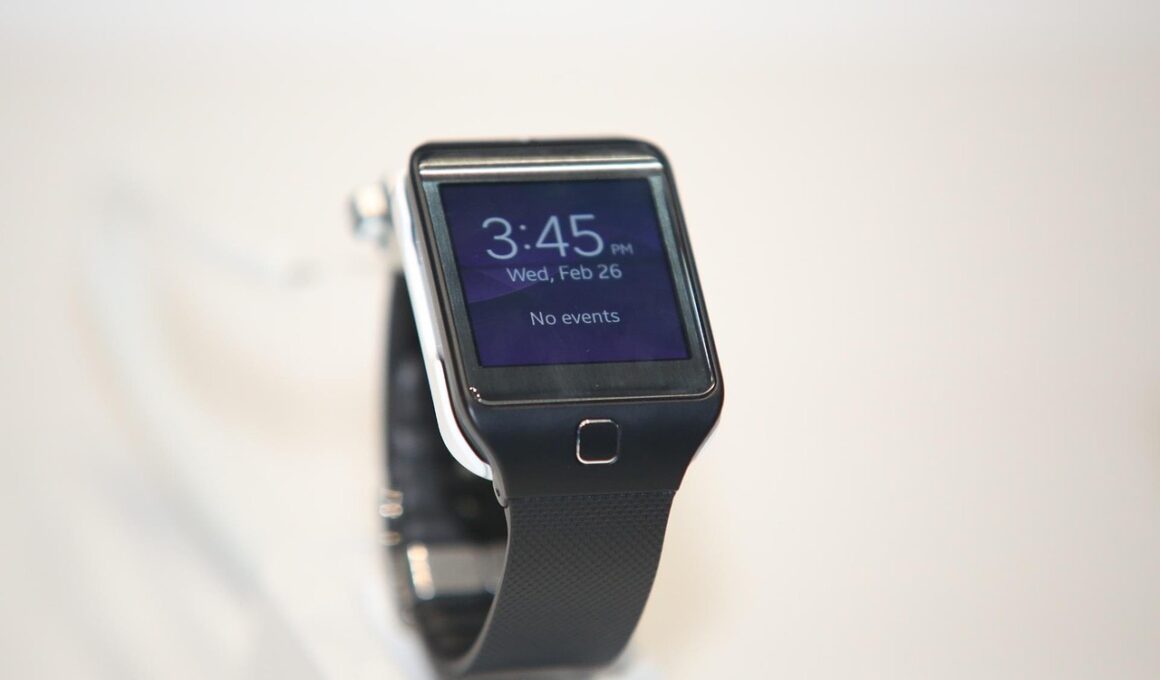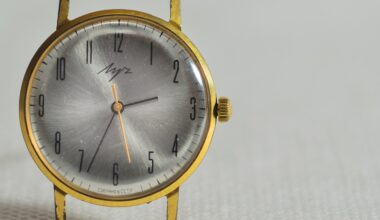How Wearable Technology IoT Data Influences Marketing Tactics
Wearable technology has grown in significance and impact over recent years. Devices such as smartwatches and fitness trackers collect vast amounts of data that offer insights into consumer behavior. Marketers can leverage IoT data from these devices to discern users’ preferences, habits, and activities. Analyzing patterns from this data enables businesses to tailor their marketing strategies effectively. Understanding user engagement allows marketers to create more personalized experiences. Decisions driven by this data bring higher conversion rates and improve customer satisfaction. Furthermore, brands can utilize real-time analytics to adapt marketing messages and promotional offers. This immediacy helps in responding to consumer needs promptly and effectively. Companies can find success by integrating wearable technology data into their marketing campaigns, enhancing customer relationships in turn. Recognizing the emerging trends is vital for marketers who wish to stay competitive. With wearables becoming commonplace, those who effectively harness this technology will thrive in an increasingly data-centric marketplace. Combining traditional tactics with innovative approaches driven by IoT insights fosters creativity and operational efficiency. Ultimately, embracing data-driven decisions is indispensable for long-term sustainability. The marriage of wearables and marketing opens new horizons for brand communication and strategy.
Understanding the different types of data collected by wearable technology is crucial for marketers. These devices gather information such as heart rate, activity levels, and sleep patterns. This data serves as a goldmine for insights into consumer lifestyles. Analyzing this data can uncover trends that inform marketing strategies. For instance, knowing when users are most active allows businesses to target ads effectively. Additionally, data on activity levels can help brands promote relevant products. Consumers are more receptive to marketing messages that resonate with their current behaviors. The comprehensive data collected helps in segmenting audiences based on lifestyle habits. Consequently, personalized marketing messages become feasible, improving engagement. Marketers can harness this information to generate targeted email campaigns, tailored recommendations, or exclusive offers. Data-driven segmentation using IoT insights elevates the relevance of promotional efforts. Such strategies can lead to increased customer loyalty and sales performance. Incorporating wearables data into wider marketing efforts also enriches customer journey mapping. Marketers gain a holistic view of their users, assisting in crafting more cohesive brand experiences. Ultimately, the marriage of wearable technology and marketing yields promising opportunities for innovation and greater consumer satisfaction.
Embracing Personalization Through Wearable IoT Data
Personalization is becoming increasingly critical in capturing consumer attention. Wearable technology IoT data significantly enhances the ability to create tailored experiences. Marketers can analyze user data to understand individual preferences that dictate purchasing choices. Insights gleaned from wearables enable brands to create customized recommendations, improving user engagement. As marketers refine their strategies, delivering precisely what consumers seek becomes attainable. Advanced algorithms harness this data to segment users effectively, leading to more accurate targeting and messaging. Users are more likely to respond positively to content curated with their habits and preferences in mind. Personalization not only nurtures connections but also builds trust with the brand. When consumers feel understood, they are inclined to remain loyal. Adapting marketing techniques to user behavior fosters long-term relationships that are beneficial for both parties. Moreover, leveraging wearables data aids in enhancing customer experiences at every touchpoint. The intricacies of consumer lifestyles are unraveled, making it easier to predict future needs. This preemptive approach allows brands to stay ahead of competitors. Ultimately, successful implementation of personalized strategies based on wearables insights translates into higher customer satisfaction and retention.
Real-time data is an empowering component of wearable technology and marketing synergy. Analyzing IoT data in real-time allows marketers to react swiftly to consumer actions. This immediacy is crucial for effective communication and engagement. It enables the timely delivery of personalized marketing messages, maximizing impact on the consumer. Brands can capitalize on user data from wearables to optimize promotional campaigns during high activity periods. Furthermore, integrating real-time insights into marketing strategies fosters proactive engagement with consumers. Addressing customer needs as they arise enhances overall user experiences. Additionally, this adaptability facilitates the intelligent allocation of marketing resources. Companies can optimize budgets based on real-time performance metrics, maximizing ROI. Access to instantaneous analytics allows brands to refine their strategies consistently. Companies can identify successful campaigns while discontinuing less effective ones promptly. This dynamic marketing approach encourages continuous improvement through data feedback loops. Brands that adopt real-time strategies gain competitive advantages across various sectors. By leveraging immediate insights from wearables, marketers streamline their operations and enhance overall effectiveness. This innovative approach leads to improved brand visibility and position within the marketplace.
Driving Engagement Through Gamification and Wearable Data
Gamification is emerging as a potent tool in marketing as it harnesses IoT data from wearables. By integrating elements of gaming into marketing strategies, businesses can significantly boost consumer engagement. Wearables track individual achievements and milestones, providing marketers insights into user motivation. Brands can create challenges or competitions, which encourage users to interact with the product more frequently. Utilizing data from wearables allows companies to personalize experiences within gamified frameworks. Users are incentivized to participate through rewards, loyalty points, or exclusive access. This interactive approach captivates consumers’ attention, fostering deeper brand connections. Furthermore, gamification enhances data collection efforts, allowing marketers to gather more insights about user preferences and habits. The combination of playfulness and analytics is a transformative strategy. Companies can understand what drives consumer behavior, fine-tuning their offerings accordingly. Gamification also leads to stronger community building among shared experiences. Users are likely to share challenges or achievements on social media, leading to organic brand visibility. The positive reinforcement strategies employed in gamification enhance customer satisfaction and retention. Ultimately, integrating wearables data within gamified experiences provides brands a fresh avenue for consumer engagement.
Wearable technology IoT data contributes to the development of innovative marketing campaigns. As more consumers adopt wearable devices, marketers must adapt to this evolving landscape. Embracing this technology opens doors to creativity, resulting in unique promotional strategies. For instance, proximity marketing can deliver tailored messages based on a user’s location. Utilizing data from wearables, brands can offer deals when consumers are near stores or events. This strategy strengthens consumer engagement and drives foot traffic significantly. Additionally, integrating wearables with social media platforms enhances information dissemination among peers. Marketers can utilize social sharing from wearables to amplify brand reach. Furthermore, user-generated content sparked by wearable technology can inform future campaigns. Real-time wearable data informs marketers about successful ideas and preferred messaging styles. Employing these insights allows businesses to craft compelling narratives surrounding their brands. Innovation steered by wearable data cultivates authenticity and freshness in marketing efforts. As customers become more discerning, brands must showcase their unique selling propositions. Wearable technology not only feeds data but also enables brands to iterate quickly in response to changing consumer preferences. This adaptive strategy ensures ongoing relevance within the marketplace.
The Future of Data-Driven Marketing with Wearables
As technology progresses, the future of marketing will increasingly rely on data-driven insights. The rise of wearable technology highlights the importance of collecting and analyzing user data effectively. Marketers must harness this potential to maintain competitiveness in the evolving landscape. With advancements in IoT and AI, predictive analytics will become vital. Brands will leverage wearables data to forecast customer behavior and tailor strategies accordingly. Moreover, improving privacy measures and transparency in data usage is essential. Consumers are increasingly concerned about how data is utilized, and irresponsible practices can damage brand trust. Therefore, implementing robust data governance is pivotal in maintaining customer relationships. Additionally, the integration of wearables with emerging technologies like augmented reality (AR) opens exciting opportunities. Marketers can create immersive experiences that blend physical and digital realms. By adopting innovative strategies that utilize IoT data from wearables, brands can differentiate themselves in crowded markets. The road ahead may hold transformative changes reshaping consumer interactions. Embracing these advancements ensures marketers are well-prepared to navigate future challenges. Ultimately, a forward-thinking approach that prioritizes user experience will define the success of data-driven marketing.
This is another paragraph with exactly 190 words…


